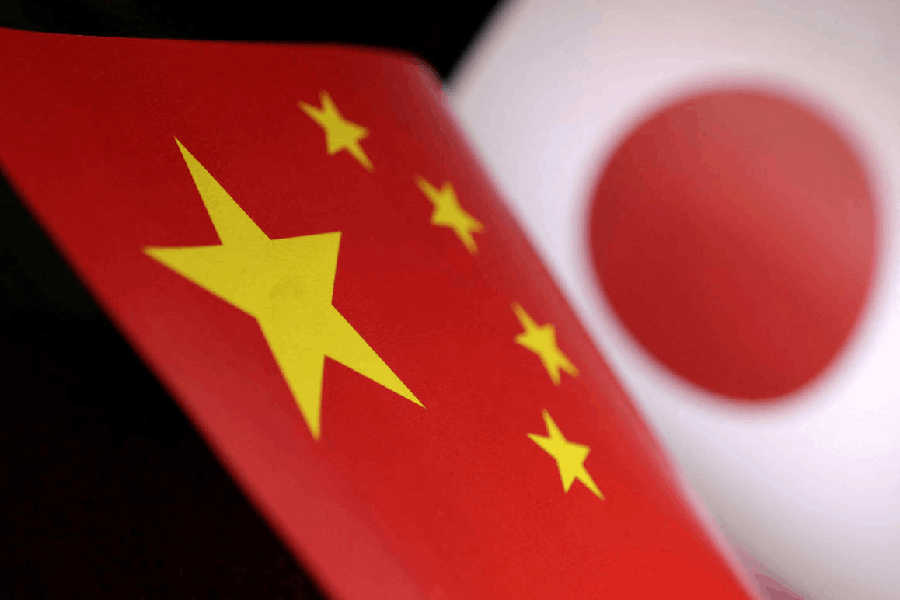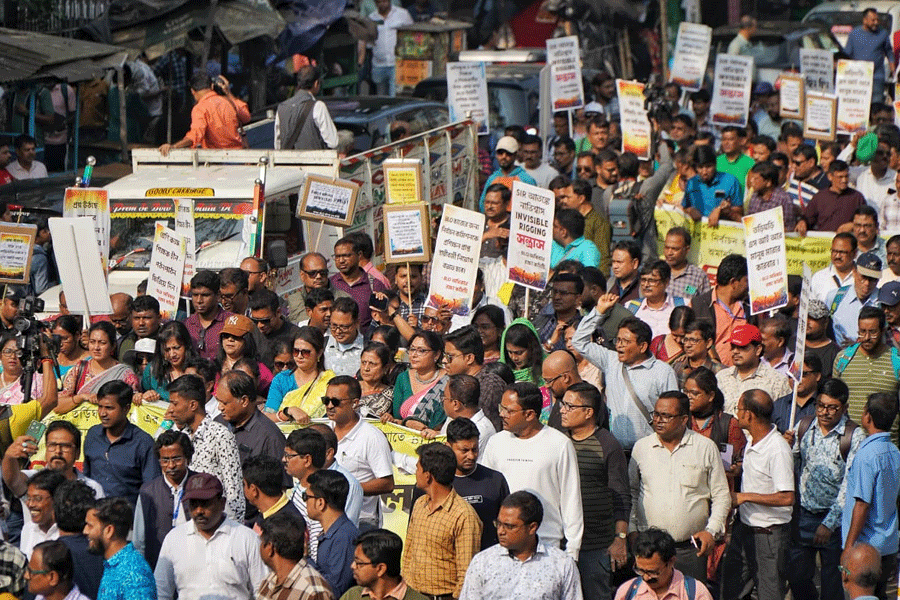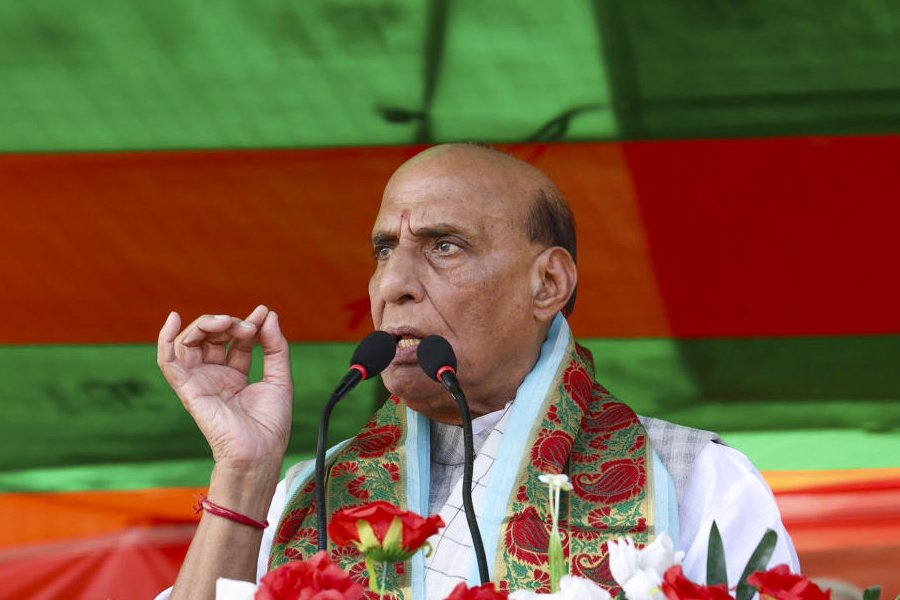|
|
| Henri Rousseau, Apes in the Orange Grove, 1910 |
The Sly Company of People Who Care By Rahul Bhattacharya, Picador, Rs 495
In 1951, the American poet, Elizabeth Bishop, then 40, arrived in Santos, Brazil, expecting to stay there for a couple of weeks. She left after 15 years. Yet, while recording her first impression of that foreign land, Bishop had wondered with some trepidation: “... Oh, tourist,/ is this how this country is going to answer you// and your immodest demands for a different world,/ and a better life”? She would keep returning to such ruminations in “Questions of Travel”, wondering: “Should we have stayed home and thought of here?” and “Oh, must we dream our dreams/ and have them, too?” or “Is it the lack of imagination that makes us come to imagined places, not just stay at home?”
In the opening sentence of Rahul Bhattacharya’s excellent debut novel, the first-person narrator, closely modelled on the author himself, gives a provisional answer to these questions: “Life, as we know, is a living, shrinking affair, and somewhere down the line I became taken with the idea that man and his world should be renewed on a daily basis.” After spending a few days in Georgetown as a 22-year-old cricket reporter covering an India-West Indies Test series, the narrator was so taken with Guyana that he decided to come back for a year. “Alone, amiss, awander” in this country of “epic indolence”, he takes the reader on a quixotic journey filled with “the sly company of people who care”. Action Jackson, Lancelot Banarsee, Rabindranauth Latchman, Ramotar Seven Curry, 9MM, Midas, Mista Capone — their names are as full of quirks as their personalities. But the centrepiece of this eccentric dramatis personae is the gorgeous Jankey Ramsaywack, or Jan, with whom the narrator embarks on a brief but tempestous affair.
Although the narrator never discloses his name directly, he is christened, by common consensus, as “Gooroo”. As the mention of his real name evokes rapturous admiration for “Sharook Khan” in all and sundry — even Jan takes a shine to his “starbai name” — we assume that it is none other than Rahul, a name on which a series of Bollywood characters played by King Khan had exerted a monopoly of sorts. Because of his easy presence among the Guyanese, a community of “born sceptics”, the narrator is soon scripted into the role of “watcher and listener”, which allows him privileged access to the intricate workings of social life in Kitty, “a toy community” in Guyana. As a result, his observations are nuanced, coated with irony, touched by rare insights, and recorded with a lyrical flourish. If from time to time, he gets a bit carried away by the exotic energies of his surroundings — he finds the taste of Guyanese rum “round, ribald, ach[ing] with the pure sweat of slavery” — he is quick to register “the absurd foreignness and familiarity of the interaction” between East Indians, the descendants of coolies and indentured labourers who migrated from India to these parts, and Indian Nationals, visitors from present-day India.
In spite of the jokey, infectiously frivolous spirit of Bhattacharya’s prose, we register an undercurrent of tension, “a competition of suffering”, cutting across class and ethnicity. Africans resenting snobbish Indians, Indians trying to outwit Africans, politically and economically — a restless churning of contesting histories, cultures, traditions and values inside an irrepressible melting pot. The piercing irony is that the settlers and the natives both get levelled under the imperialist gaze of the Western eye. As Baby the conman points out, even someone with skin as clear as the narrator’s would, after all, qualify as just another “blackman” in America. For Baby, this phenomenon goes on to affirm the mythical “power of black”: “Drop a lil single drop of black in any colour, see how much the colour turn black. Anytime you got a little black in you, you is a blackman.”
In the second part of his novel, Bhattacharya gives us a potted history of this curious intermingling that led to such a “tremendous corruption” as “beef khichdi” and started off a process of what historians have called “Chamarisation”: “Castes marrying each other! Brahmins conducting weddings for chamars!” But in spite of their attachment to the Caribbean soil and vain aloofness from mainstream African culture, the East Indians remain pitiful creatures: migrants who behave like honorary imperialists, disowned by their own histories, yet anxious to disavow every taint of the foreign civilization into which they have been thrust. “We are sad because ever since we left India we have a hole in our hearts. Nothing can fill that hole… And yet… we find that Indians do not consider us to be Indians.” Thus runs the typical East Indian grudge.
In spite of being thrilled by “massively Naipaulian” moments during his sojourn through this country celebrated by Evelyn Waugh, in Black Mischief, with his patrician sense of humour, the narrator does not quite get to the heart of his Caribbean experience until the concluding section of the book. If in the preceding parts, Bhattacharya delights us with a kind of ethnography that is reminiscent of Lévi-Strauss’s Tristes Tropiques, in this last section, he breaks down the barrier between subject and object, observer and observed. The narrator suddenly finds himself in the thick of a situation that is as ineluctably eroticized as loaded with meaning. Earlier, it was the pull of adventure, laced with danger, that had made him accompany diamond hunters on a journey into the heart of a Conradian darkness. But what is it that makes him captive to the charms of Jan, the echt cooliegirl? Is it pure lust or is it, once again, the allure of the unknown? And why, after knowing such joys in the arms of this sex goddess straight out of García Márquez, does he drift away from her? Perhaps it is always easier, more so in a globalized world, to bridge the gulf between distant geographies than between individual histories. As Bishop wisely noted, “Continent, city, country, society:/ the choice is never wide and never free”.












